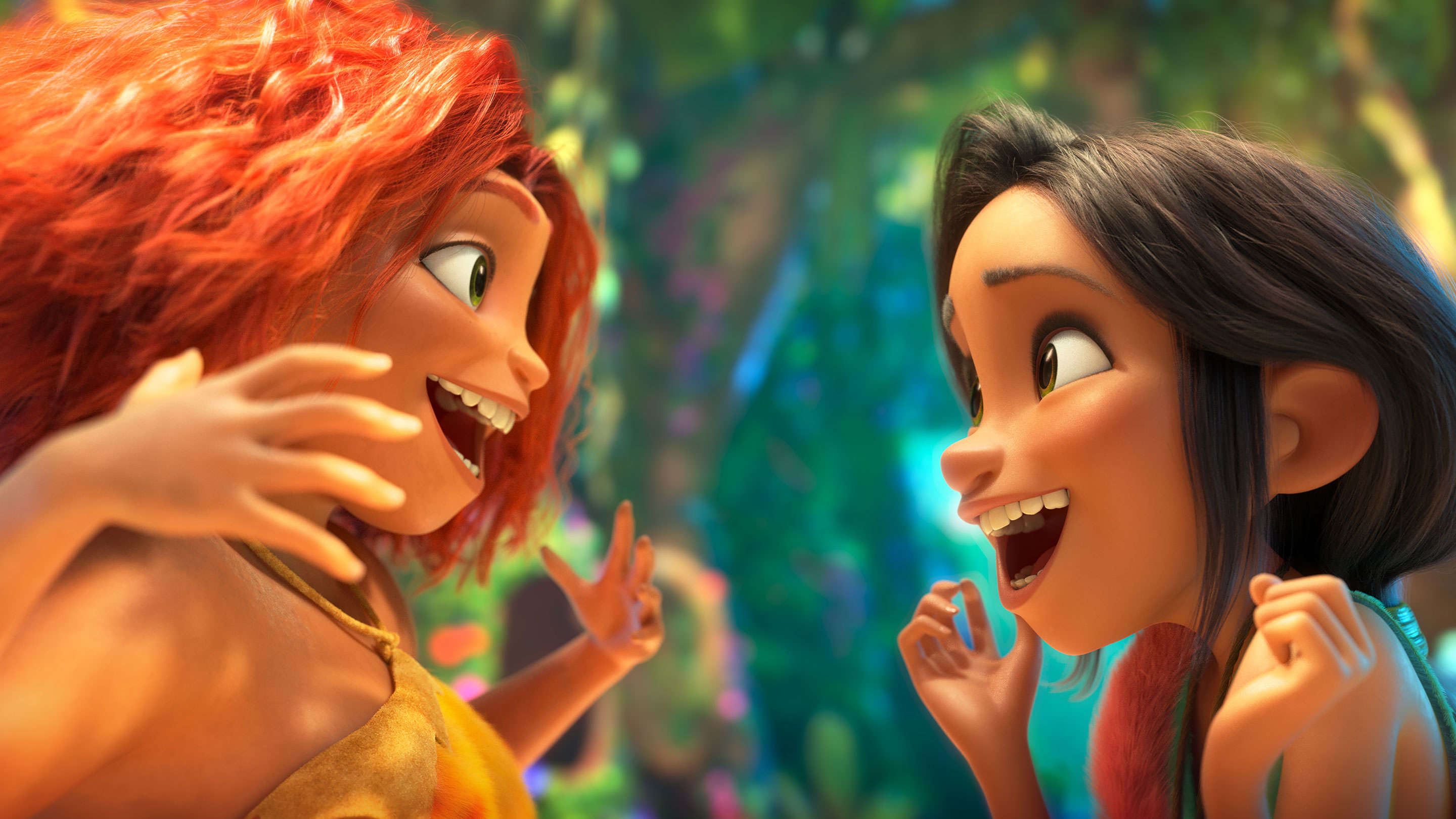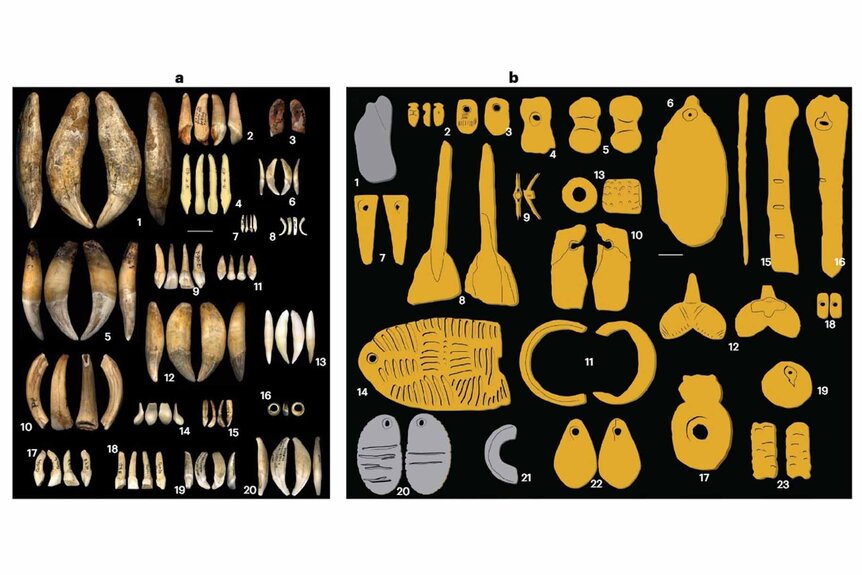Create a free profile to get unlimited access to exclusive videos, sweepstakes, and more!
Scientists are Unraveling Ancient Human Cultures from the Jewelry They Wore
You can tell a lot about a person (or a culture) by the jewelry they wore.

Our species emerged in Africa approximately a quarter of a million years ago and quickly spread across Eurasia, and eventually around the world. We started writing things down about 5,000 years ago, only in the last 2% of our history. Everything we know of our history before that comes from the bones, the artifacts, and the art our ancestors left behind.
The world must have felt so large back then, with distinct populations separated by seemingly impassable horizons. Not to mention more than one human species carving out their own slices of the ecological pie. It’s a world explored with some degree of accuracy in The Croods and its sequel The Croods: A New Age (streaming now on Peacock). It’s a story about what happens when two different groups of people crash into one another. And even though it plays for laughs, it highlights the ways ancient human cultures would have been different and the same, and that those boundaries don’t necessarily fall along biological lines.
Study of Ancient Human Jewelry Says We Are What We Wear
If the Croods taught us anything it’s that culture and family are more than bone deep. At least, that’s how we like to imagine our past selves, as being capable of reaching across cultural lines. We know very little about the specifics of prehistoric daily life and how different cultures sprung up and interacted with one another, but a new study published in Nature Human Behavior provides a new clue in the form of ancient bling.
The new study focused on the creation of jewelry and ornamentation among European peoples during the Gravettian, a period of time from 34,000 to 24,000 years ago. This period is characterized by the creation of long, blade-like stone tools and hunting mammoths across increasingly frozen landscapes. It’s also known for art.
For More on Ancient Humans:
Turns Out, Neanderthals and Homo Sapiens Might Be the Same Species
Building New Antibiotics from Neanderthal DNA
Ancient Humans Made Gian Omelets from the Eggs of ‘Demon Ducks of Doom’
“You may have heard of or seen the Venus figurines… there are obviously other cultures who made them, but the Gravettians are the Venus figurine producing culture. They have loads of cave art,” Jack Baker, the study’s lead author, told SYFY WIRE. The Gravettians also made jewelry. They made it out of seashells, out of bones and teeth, and whatever else they could get their hands on.
While jewelry making was a universal activity across distant groups during this time, unique patterns emerged when researchers looked at how jewelry was being made, what it was being made of, and when it was being worn. Those differences helped to identify distinct cultural groups across Europe during this 10,000-year stretch. Some jewelry, for instance, was only ever found in burial contexts and was never found at an “occupation” site, where people lived their day to day lives.
One way to tell groups apart was to look at the materials they chose when making jewelry. Researchers found some expected differences, like an increased use of seashells closer to the coast, but they found less obvious patterns too. “There is some link between using shells and proximity to the coast but not enough to explain the patterns we found. For instance, we found shells in eastern Europe that came from the Atlantic,” Baker said, suggesting that the Gravettians had preferences and weren’t simply using whatever materials were readily available. On the other hand, some cultural groups discarded particular materials even when they were available and abundant.
“Throughout the entire European continent, you have reindeer all over the place. You find skeletal reindeer across the entire continent, but we only really find perforated deer teeth in the west. Exactly the same thing with foxes, you see the other way around. They are available all over the continent, but you only see them being used as ornaments in the east,” Baker said.
By focusing on the specifics of Gravettian jewelry, researchers were able to identify at least nine distinct cultural groups stretching across Europe. Importantly, these groups weren’t necessarily defined by geography or by genetics. The authors provide a map (above) outlining the populations and cultures they identified, and the distribution has some interesting revelations. There are groups which are genetically and geographically related but culturally separate, and the opposite is also true. Some groups which are genetically distinct nonetheless share the same culture.
It’s not really about where you’re from or even who you are; it’s who you’re with and what you do together that matters. Same as it ever was.
Watch cultures collide in The Croods: A New Age, streaming now on Peacock.




























